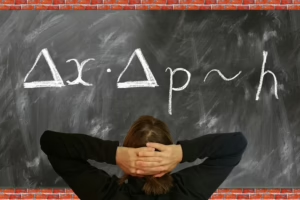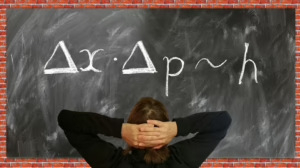Beyond the Standard Model: Is This What Particle Physics Has Been Waiting For?
For decades, the Standard Model of particle physics has reigned supreme as the most accurate and comprehensive description of the fundamental constituents of matter and their interactions. This elegant framework elegantly encapsulates quarks, leptons, and the force-carrying bosons that mediate their relationships, explaining a vast array of experimental observations with remarkable precision [1]. From the intricate patterns of particle decays to the energy scales probed by the Large Hadron Collider (LHC), the Standard Model has consistently weathered every experimental challenge thrown its way.
However, despite its undeniable success, the Standard Model is not without its shortcomings. It leaves a number of profound questions unanswered, hinting at the existence of a deeper, more complete theory that lies beyond its grasp [2]. The Standard Model fails to incorporate gravity, the force that governs the cosmos on the largest scales. It provides no explanation for the observed masses of neutrinos, particles that were initially presumed to be massless. Furthermore, it offers no compelling candidate for dark matter, the mysterious substance that makes up the majority of the universe’s mass. And perhaps most disturbingly, it offers no reason for the observed matter-antimatter asymmetry in the universe – the fact that we exist at all [3].
These glaring omissions have spurred physicists to explore a diverse landscape of theoretical possibilities that lie beyond the Standard Model. These proposals encompass a wide range of ideas, from new symmetries and extra dimensions to novel particles and exotic interactions. Each seeks to address one or more of the Standard Model’s shortcomings, offering a glimpse into the fundamental nature of reality that lies just beyond our current understanding [4].
This article will delve into some of the most compelling theoretical frameworks proposed to extend the Standard Model, examining their strengths, weaknesses, and the experimental signatures that could potentially reveal their existence. We will explore supersymmetry, a theory that posits a symmetry between bosons and fermions, potentially solving the hierarchy problem and providing a dark matter candidate [5]. We will discuss grand unified theories, which attempt to unify the strong, weak, and electromagnetic forces into a single, overarching interaction [6]. We will also consider extra dimensions, which propose that the universe may possess more than the three spatial dimensions we experience, potentially affecting gravity and particle interactions at high energies [7]. Finally, we will discuss the ongoing experimental efforts at the LHC and other facilities aimed at probing these new frontiers and potentially unveiling the next chapter in our understanding of the universe.
1. The Standard Model: A Triumph Marred by Limitations
Before venturing into the realms beyond, it is crucial to appreciate the remarkable accomplishments of the Standard Model. It is a quantum field theory based on the gauge symmetry group SU(3)c × SU(2)L × U(1)Y, where SU(3)c describes the strong force acting on quarks and gluons, SU(2)L describes the weak force acting on left-handed fermions, and U(1)Y describes the electromagnetic force acting on all charged particles [8].
The Standard Model’s particle content is elegantly organized. Quarks, the fundamental constituents of protons and neutrons, come in six flavors (up, down, charm, strange, top, and bottom) and are subject to the strong force. Leptons, including electrons, muons, taus, and their associated neutrinos, are not affected by the strong force. The force-carrying bosons, known as gauge bosons, mediate the interactions between these particles. The photon mediates the electromagnetic force, the W and Z bosons mediate the weak force, and the gluons mediate the strong force [9].
The Higgs boson, discovered at the LHC in 2012, is a crucial component of the Standard Model. It is responsible for the electroweak symmetry breaking, a process that gives mass to the W and Z bosons, as well as to the quarks and leptons [10]. The Higgs mechanism, as it is known, explains why some particles have mass while others, like photons, remain massless.
The Standard Model has successfully predicted a vast number of experimental results. From the precise measurements of the electron’s magnetic moment to the discovery of the top quark, the Standard Model has consistently matched experimental data with remarkable accuracy [11]. Its predictions have been confirmed to an unprecedented level of precision, making it one of the most successful scientific theories ever developed.
However, the Standard Model is not a complete theory. Its limitations are significant and point towards the existence of a more fundamental theory that encompasses the Standard Model as a low-energy approximation. These limitations include:
- Gravity: The Standard Model does not incorporate gravity. It is a quantum field theory that describes the interactions of elementary particles, while gravity is described by Einstein’s theory of general relativity, a classical theory of spacetime. Attempts to quantize gravity have so far been unsuccessful, highlighting the incompatibility between the Standard Model and general relativity [12].
- Neutrino Masses: The Standard Model originally predicted that neutrinos were massless. However, experiments have shown that neutrinos have tiny but non-zero masses. The Standard Model needs to be extended to accommodate these neutrino masses, which can be done in various ways, such as adding right-handed neutrinos or introducing new interactions [13].
- Dark Matter: Astronomical observations indicate that the majority of the matter in the universe is dark matter, a substance that does not interact with light. The Standard Model does not provide a suitable candidate for dark matter. None of the known particles in the Standard Model have the necessary properties to explain the observed abundance and behavior of dark matter [14].
- Matter-Antimatter Asymmetry: The universe is predominantly composed of matter, with very little antimatter. The Standard Model cannot fully explain this matter-antimatter asymmetry. According to the Standard Model, equal amounts of matter and antimatter should have been produced in the Big Bang. However, the observed asymmetry suggests that there must be additional processes that favor the production of matter over antimatter [15].
- Hierarchy Problem: The Standard Model suffers from the hierarchy problem, which refers to the enormous difference between the electroweak scale (around 100 GeV) and the Planck scale (around 10^19 GeV), the energy scale at which quantum gravity effects are expected to become significant. The Standard Model requires fine-tuning of parameters to maintain the electroweak scale at its observed value, which is considered unnatural [16].
- Muon Anomalous Magnetic Moment: The experimental measurement of the muon’s anomalous magnetic moment (g-2) disagrees with the Standard Model prediction. This discrepancy could be a sign of new physics beyond the Standard Model, although further experimental and theoretical work is needed to confirm this [17].
These shortcomings of the Standard Model motivate the search for new physics beyond the Standard Model, aiming to address these unanswered questions and provide a more complete and fundamental understanding of the universe.
2. Supersymmetry (SUSY): A Symmetry of the Universe?
Supersymmetry (SUSY) is one of the most popular and well-studied theoretical frameworks that extends the Standard Model. It posits a fundamental symmetry between bosons and fermions, meaning that for every known particle in the Standard Model, there exists a corresponding “superpartner” with a different spin [18]. For example, the superpartner of the electron is the selectron (a scalar particle), and the superpartner of the photon is the photino (a fermion particle).
SUSY aims to address several of the Standard Model’s shortcomings. One of the primary motivations for SUSY is the hierarchy problem. SUSY can stabilize the electroweak scale by introducing new particles and interactions that cancel out the large quantum corrections that would otherwise drive the Higgs boson mass up to the Planck scale [19].
Furthermore, SUSY provides a natural candidate for dark matter. The lightest supersymmetric particle (LSP) is often stable due to a symmetry called R-parity, making it a viable candidate for weakly interacting massive particles (WIMPs), a leading dark matter candidate [20]. The neutralino, a mixture of the superpartners of the Higgs boson and the gauge bosons, is a commonly considered LSP candidate.
SUSY also offers the possibility of gauge coupling unification. The Standard Model gauge couplings, which determine the strengths of the strong, weak, and electromagnetic forces, do not quite unify at high energies. However, in SUSY models, the introduction of superpartners modifies the running of the gauge couplings, allowing them to unify at a grand unified scale [21].
Despite its theoretical appeal, SUSY has not yet been observed experimentally. The LHC has searched for SUSY particles in a variety of channels, but no evidence for their existence has been found so far [22]. This has led to the development of more complex and refined SUSY models that evade the current experimental constraints.
Some possible scenarios include:
- Split Supersymmetry: This scenario postulates that the scalar superpartners are much heavier than the fermionic superpartners, suppressing their production at the LHC and evading the experimental constraints [23].
- Natural Supersymmetry: This scenario focuses on keeping the stop quark (the superpartner of the top quark) relatively light, as it plays a crucial role in stabilizing the Higgs boson mass. Natural SUSY models often predict the existence of light stops and higgsinos, which could be within the reach of future LHC experiments [24].
- R-parity Violation: This scenario allows for the decay of the LSP, eliminating the dark matter candidate but potentially leading to novel signatures at the LHC [25].
The search for SUSY continues at the LHC and other experiments. If SUSY is realized in nature, it could revolutionize our understanding of particle physics and provide answers to some of the most fundamental questions about the universe.
3. Grand Unified Theories (GUTs): Unifying the Forces
Grand Unified Theories (GUTs) attempt to unify the strong, weak, and electromagnetic forces into a single, overarching interaction at very high energies [26]. This unification is based on the idea that the three forces are different manifestations of a single force that is broken at lower energies.
GUTs are based on larger gauge groups that contain the Standard Model gauge group SU(3)c × SU(2)L × U(1)Y as a subgroup. Examples of common GUT groups include SU(5) and SO(10) [27]. In GUTs, quarks and leptons are placed into the same multiplets, suggesting a fundamental relationship between these particles.
One of the most appealing features of GUTs is their ability to explain the quantization of electric charge. In the Standard Model, the electric charges of the particles are arbitrary. However, in GUTs, the electric charges are determined by the structure of the GUT group, leading to the observed quantization [28].
GUTs also predict proton decay, a process in which protons decay into lighter particles. This prediction arises because the unification of quarks and leptons allows for interactions that violate baryon number conservation. The predicted proton lifetime depends on the GUT scale, the energy scale at which the three forces unify. Current experimental limits on the proton lifetime place strong constraints on the possible GUT models [29].
Another prediction of GUTs is the existence of magnetic monopoles, hypothetical particles with a single magnetic charge. Magnetic monopoles are predicted to be very massive and could have been produced in the early universe. The search for magnetic monopoles is an ongoing experimental effort [30].
GUTs can be combined with SUSY to form supersymmetric GUTs, which offer several advantages. SUSY can help to stabilize the GUT scale and improve the unification of the gauge couplings. Supersymmetric GUTs also provide a framework for understanding neutrino masses and mixings [31].
While GUTs are theoretically appealing, they face several challenges. The proton decay constraints are stringent, and no experimental evidence for proton decay has been found so far. Furthermore, the GUT scale is typically very high, making it difficult to probe GUT-scale physics directly in experiments [32].
Despite these challenges, GUTs remain an important theoretical framework for exploring the unification of the fundamental forces and the nature of the universe at very high energies.
4. Extra Dimensions: Beyond Our Three-Dimensional World
The idea that the universe may have more than the three spatial dimensions we perceive has been explored extensively in theoretical physics. Extra dimensions could be compactified, meaning that they are curled up at a very small scale, making them undetectable to our current experiments [33].
Extra dimensions can address several of the Standard Model’s shortcomings and provide new perspectives on gravity and particle physics. One of the motivations for considering extra dimensions is the hierarchy problem. In some models, the weakness of gravity compared to the other forces can be explained by the fact that gravity propagates in all dimensions, while the other forces are confined to a lower-dimensional brane [34].
One example of an extra-dimensional model is the Randall-Sundrum model, which postulates a warped extra dimension. In this model, the Standard Model particles are confined to a brane with a negative cosmological constant, while gravity can propagate in the extra dimension. The warping of the extra dimension can explain the hierarchy between the Planck scale and the electroweak scale [35].
Another class of extra-dimensional models involves large extra dimensions, where the extra dimensions are large enough to be probed by experiments. In these models, gravity becomes strong at a lower energy scale, potentially leading to observable effects at the LHC, such as the production of black holes or gravitons [36].
Extra dimensions can also affect the properties of particles and their interactions. For example, in some models, the Standard Model particles can propagate in the extra dimensions, leading to the existence of Kaluza-Klein (KK) modes, which are heavier copies of the Standard Model particles [37]. The search for KK modes is an active area of research at the LHC.
Extra dimensions can also provide a framework for understanding neutrino masses and mixings. In some models, right-handed neutrinos exist in the extra dimensions, and their interactions with the Standard Model neutrinos can generate the observed neutrino masses through the seesaw mechanism [38].
The search for extra dimensions is an ongoing experimental effort. The LHC is searching for evidence of extra dimensions in various channels, such as the production of gravitons, black holes, and KK modes. Future experiments, such as the International Linear Collider (ILC), could provide more precise measurements that could reveal the existence of extra dimensions [39].
5. The Landscape of New Physics: Experimental Probes and Future Directions
The search for new physics beyond the Standard Model is a central goal of particle physics research. Experiments at the LHC and other facilities are pushing the boundaries of our knowledge and probing new energy scales.
The LHC is the world’s most powerful particle accelerator, colliding protons at unprecedented energies. The LHC experiments, such as ATLAS and CMS, are searching for new particles and interactions that could provide evidence for new physics beyond the Standard Model [40].
The LHC has already made several important discoveries, including the Higgs boson. However, so far, no evidence for SUSY, GUTs, or extra dimensions has been found. This has led to the development of more complex and refined theoretical models that evade the current experimental constraints.
Future upgrades of the LHC, such as the High-Luminosity LHC (HL-LHC), will increase the collision rate and allow for more precise measurements. The HL-LHC will provide a unique opportunity to search for rare processes and probe higher energy scales, potentially revealing new physics that is currently beyond our reach [41].
In addition to the LHC, other experiments are also searching for new physics beyond the Standard Model. Neutrino experiments are studying the properties of neutrinos and searching for new neutrino interactions. Dark matter experiments are searching for direct and indirect detection of dark matter particles. Cosmic ray experiments are studying the highest-energy particles in the universe and searching for evidence of new physics [42].
Future colliders, such as the ILC and the Future Circular Collider (FCC), could provide even more precise measurements and probe even higher energy scales. These colliders could potentially discover new particles and interactions that would revolutionize our understanding of particle physics [43].
The search for new physics beyond the Standard Model is a challenging but exciting endeavor. It requires a combination of theoretical insights, experimental ingenuity, and technological innovation. The ultimate goal is to develop a more complete and fundamental understanding of the universe and the laws that govern it.
6. Conclusion: The Unfinished Symphony of Particle Physics
The Standard Model of particle physics has been an extraordinarily successful theory, providing an accurate description of the fundamental constituents of matter and their interactions. However, it is not a complete theory and leaves several profound questions unanswered.
The search for new physics beyond the Standard Model is driven by the desire to address these unanswered questions and develop a more complete and fundamental understanding of the universe. Theoretical frameworks such as SUSY, GUTs, and extra dimensions offer promising avenues for exploring new physics and potentially resolving the Standard Model’s shortcomings.
Experiments at the LHC and other facilities are pushing the boundaries of our knowledge and probing new energy scales. While no definitive evidence for new physics has been found so far, the search continues, and future experiments hold the potential to reveal new particles and interactions that would revolutionize our understanding of particle physics.
The quest to understand the fundamental nature of reality is an ongoing journey, and the search for new physics beyond the Standard Model is a crucial part of this endeavor. The future of particle physics is bright, and the potential for discovery is immense. As we continue to explore the unknown, we may uncover new laws of nature that will reshape our understanding of the universe and our place within it. The symphony of particle physics remains unfinished, and the most exciting movements may still lie ahead.
References
[1] Griffiths, D. (2008). Introduction to Elementary Particles (2nd ed.). Wiley-VCH. [2] Schwarz, P. M. (2017). The Standard Model: A Complete Guide. CRC Press. [3] Dine, M. (2007). Supersymmetry and String Theory: Beyond the Standard Model. Cambridge University Press. [4] Kane, G. L. (2003). Perspectives on Supersymmetry II. World Scientific. [5] Martin, S. P. (1997). A Supersymmetry Primer. Advanced Series on Directions in High Energy Physics, 18, 1-98. [6] Georgi, H., & Glashow, S. L. (1974). Unity of All Elementary-Particle Forces. Physical Review Letters, 32(8), 438. [7] Randall, L. (2005). Warped Passages: Unraveling the Mysteries of the Universe’s Hidden Dimensions. Ecco. [8] Halzen, F., & Martin, A. D. (1984). Quarks & Leptons: An Introductory Course in Modern Particle Physics. John Wiley & Sons. [9] Thomson, M. (2013). Modern Particle Physics. Cambridge University Press. [10] Higgs, P. W. (1964). Broken Symmetries and the Masses of Gauge Bosons. Physical Review Letters, 13(16), 508. [11] Beringer, J., et al. (Particle Data Group). (2012). Review of Particle Physics. Physical Review D, 86(1), 010001. [12] Kiefer, C. (2012). Quantum Gravity. Oxford University Press. [13] Mohapatra, R. N., & Pal, P. B. (2006). Massive Neutrinos in Physics and Astrophysics. World Scientific. [14] Bertone, G., Hooper, D., & Silk, J. (2005). Particle Dark Matter: Evidence, Candidates and Constraints. Physics Reports, 405(5-6), 279-390. [15] Riotto, A., & Trodden, M. (1999). Recent Progress in Baryogenesis. Annual Review of Nuclear and Particle Science, 49(1), 35-75. [16] Giudice, G. F. (2008). Naturally Speaking: The Naturalness Criterion and LHC Physics. Perspectives on LHC Physics, 155-178. [17] Bennett, G. W., et al. (Muon g-2 Collaboration). (2006). Final Report of the Muon E821 Anomalous Muon Magnetic Moment Measurement at the Brookhaven AGS. Physical Review D, 73(7), 072003. [18] Wess, J., & Bagger, J. (1992). Supersymmetry and Supergravity. Princeton University Press. [19] Haber, H. E., & Kane, G. L. (1985). The Search for Supersymmetry: Probing Physics Beyond the Standard Model. Physics Reports, 117(2-4), 75-263. [20] Jungman, G., Kamionkowski, M., & Griest, K. (1996). Supersymmetric Dark Matter. Physics Reports, 267(5-6), 195-373. [21] Amaldi, U., de Boer, W., & Fürstenau, H. (1991). Comparison of Grand Unified Theories with Electroweak and Strong Coupling Constants Measured at LEP. Physics Letters B, 260(3-4), 447-455. [22] Aad, G., et al. (ATLAS Collaboration). (2016). Summary of the ATLAS Experiment’s Searches for Supersymmetry after LHC Run 1. Journal of High Energy Physics, 2016(10), 134. [23] Arkani-Hamed, N., Dimopoulos, S., Giudice, G. F., & Romanino, A. (2005). Split Supersymmetry. Nuclear Physics B, 709(1-2), 3-46. [24] Papucci, M., Vichi, A., & Weiler, K. M. (2012). Natural Supersymmetry: Status and Prospects. Journal of High Energy Physics, 2012(10), 092. [25] Barreto, R. A., Gomes, M. M., Da Silva, A. J., & Dias, A. G. (2006). R-Parity Violation and the LHC. International Journal of Modern Physics A, 21(06), 1253-1300. [26] Ross, G. G. (1984). Grand Unified Theories. Benjamin-Cummings. [27] Slansky, R. (1981). Group Theory for Unified Model Building. Physics Reports, 79(1), 1-128. [28] Georgi, H. (1989). Lie Algebras in Particle Physics: From Isospin to Unified Theories. Perseus Books. [29] Nath, P., & Fileviez Perez, P. (2007). Proton Stability in Grand Unified Theories, in Strings and in Branes. Physics Reports, 441(5-6), 191-317. [30] Shnir, Y. M. (2005). Magnetic Monopoles. Springer. [31] Raby, S. (2002). Supersymmetric Grand Unified Theories. Theoretical Advanced Study Institute in Elementary Particle Physics. [32] Langacker, P. (2012). The Physics of Neutrinos: A Brief Overview. Philosophical Transactions of the Royal Society A: Mathematical, Physical and Engineering Sciences, 370(1969), 2142-2163. [33] Antoniadis, I. (1990). A Possible New Dimension at a Few TeV. Physics Letters B, 246(3-4), 377-384. [34] Arkani-Hamed, N., Dimopoulos, S., & Dvali, G. (1998). The Hierarchy Problem and New Dimensions at a Millimeter. Physics Letters B, 429(3-4), 263-272. [35] Randall, L., & Sundrum, R. (1999). A Large Mass Hierarchy from a Small Extra Dimension. Physical Review Letters, 83(17), 3370. [36] Davoudiasl, H., Hewett, J. L., & Rizzo, T. G. (2000). Phenomenology of the Randall-Sundrum Model. Physical Review Letters, 84(10), 2080. [37] Appelquist, T., Cheng, H. C., & Dobrescu, B. A. (2001). Bounds on Universal Extra Dimensions. Physical Review D, 64(3), 035002. [38] Dienes, K. R., Dudas, E., Gherghetta, T., & Riotto, A. (1999). Neutrino Oscillations without Neutrino Masses. Nuclear Physics B, 543(1-2), 387-411. [39] Baer, H., Barklow, T., Fujii, K., Gao, Y., List, J., Logan, H. E., … & Yokoya, K. (2013). The International Linear Collider Technical Design Report-Volume 2: Physics. [40] Evans, L., & Bryant, P. (2008). LHC Machine. Journal of Instrumentation, 3(08), S08001. [41] Apollinari, G., Béjar Alonso, I., Brüning, O., Fessia, P., Lamont, M., Rossi, L., & Zotter, B. (2017). High-Luminosity Large Hadron Collider (HL-LHC): Preliminary Design Report. [42] Cushman, P., Galbiati, C., Hall, A., Hooper, D., Kolb, S., Nelson, A., … & Undagoitia, T. M. (2013). Working Group Report: WIMP Dark Matter Direct Detection. [43] Benedikt, M., Blondel, A., Ellis, J., Falaleev, V., Grojean, C., Heinemann, B., … & Zimmermann, F. (2019). Future Circular Collider: Physics, Experiments and Detectors.

























Add Comment